
Street in Edessa. (908k)
From the Edessa, Greece entry in Wikipedia:
Edessa. also known as the "City of Waters and of the 5 Senses", until 1923 Vodena, is a city in northern Greece.
According to some ancient writers, Caranus, the legendary founder of the Argead Dynasty (whose most famous member was Alexander the Great), established the city of Edessa and made it the first capital of ancient Macedon, and later Argead rulers moved Macedon's capital to Aegae and eventually Pella. Archaeological remains have been discovered on the site of ancient Edessa, just below the modern city. The walls and many buildings have been unearthed so far. A colonnade with inscription in Greek dates from Roman times. The city achieved certain prominence in the first centuries CE, being located on the Via Egnatia. From 27 BCE to 268 CE it had its own mint. The Orthodox Christian Saint Vassa and her three children were put to death here in the 3rd century CE.
Little is known about the fate of the city after 500 CE, but we know that its Greek bishop, Isidoros, participated in the Ecumenical Council of 692.
The city disappears from the sources thereafter, and re-emerges only in the 11th century, in the account of the Bulgarian wars of Emperor Basil II by the chronicler John Skylitzes, with the Slavic name Vodena. The Bulgarian historian Vasil Zlatarski hypothesized that it was Vodena, and not Vidin on the Danube, that was a base of the Cometopuli in their revolt against Byzantium.
Due to its strategic location, controlling the Via Egnatia as it enters the Pindus mountains, the town was much fought over in the subsequent centuries: the Normans under Bohemond I captured it briefly in 1083, but were eventually repelled by the forces of Emperor Alexios I Komnenos. The Nicaean emperor John III Vatatzes captured in 1253, while in the mid-14th century its possession was disputed between the Byzantines and the Serbs under Stephen Dushan, with the latter securing its possession in January 1351. The city was for some time under control of Radoslav Hlapen, who gave it as dowry to his son-in-law Nikola Bagaš probably around 1366/7. The city remained in Bagaš's hands at least until 1385. It fell to the Ottoman war leader Evrenos Bey in the late 14th century, along with the rest of Macedonia.
During the period of Ottoman rule, the Turkish and Muslim component of the town's population steadily increased. From the 1860s onwards, the town was a flash point for clashes between Greeks and Bulgarians.
After almost 500 years of Ottoman rule, Edessa was annexed by Greece on 18 October 1912 during the First Balkan War, following the Hellenic Army's military victory against the Ottomans in the battle of Sarantaporo.
The waterfalls are the landmark of the town.
All pictures are © Dr. Günther Eichhorn, unless otherwise noted.




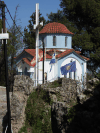



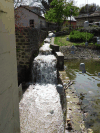

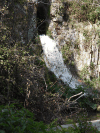
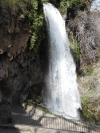
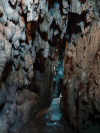
This page contains 13 pictures
Here are the links to the other main pages on Greece:
Page last updated on Fri Jul 8 18:41:35 2022 (Mountain Standard Time)